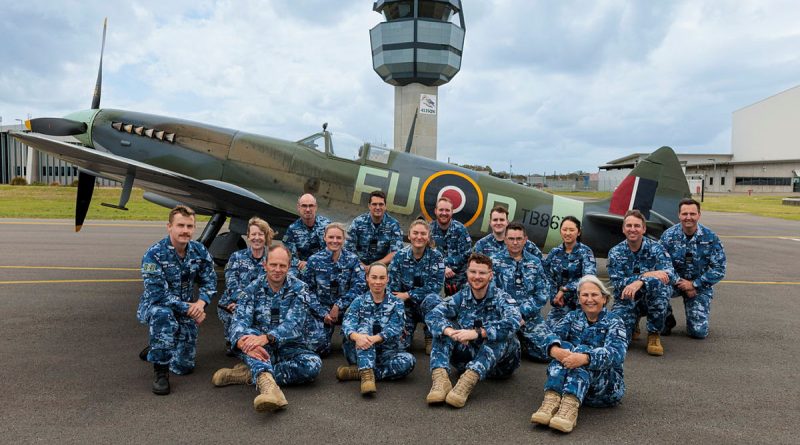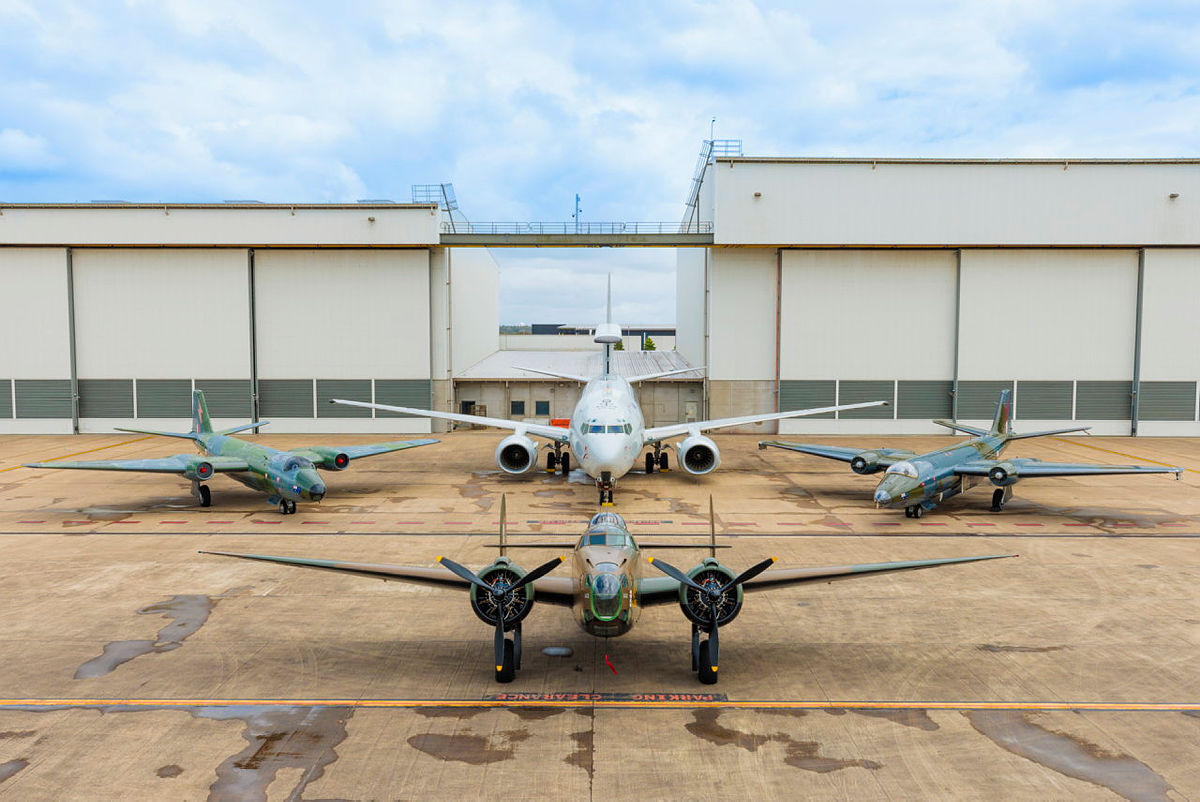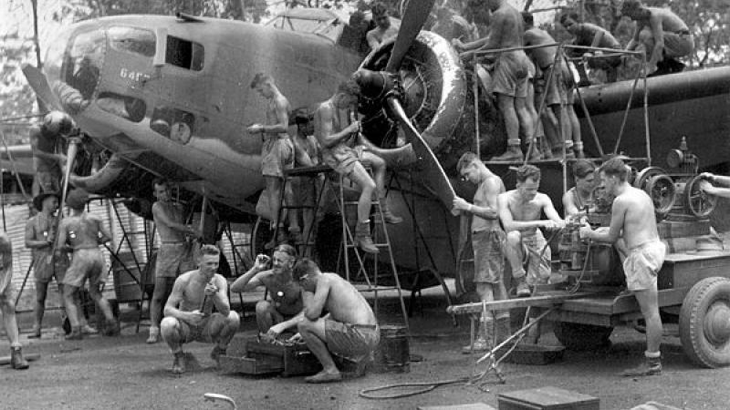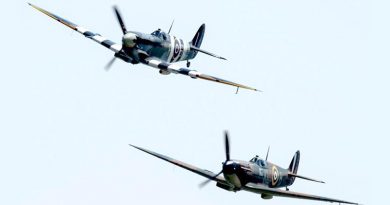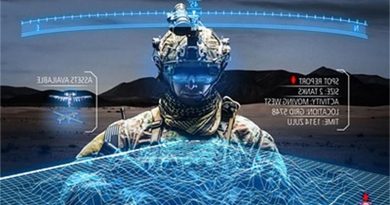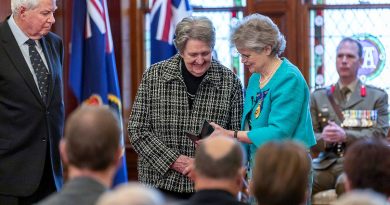Connections take flight in Newcastle

The Newcastle Williamtown Air Show and open day, held over November 18-19, gave 2 and 453 Squadrons an opportunity to connect to their past through having 100 Squadron heritage aircraft in location.
CAPTION: Personnel from 453 Squadron with a Supermarine Spitfire Mk XVI from 100 Squadron at RAAF Base Williamtown, NSW. Image has been digitally manipulated, 453 Squadron sign added to ATC tower. Story by Flying Officer Kristi Adam. Photo by Leading Aircraftman Kurt Lewis.
Members of 100 Squadron flew several heritage aircraft from Temora and RAAF Base Point Cook, but it was the Hudson, English Electric Canberra and Spitfire MkXIII that carried the most significance for the Surveillance and Response Group units of 2 and 453 Squadrons.
Between 1941 and 1943, 2 Squadron flew the Hudson and conducted bombing, ground attack, anti-shipping and reconnaissance missions in Timor and over the Japanese-occupied Netherlands East Indies. They received the US Presidential Unit Citation for “outstanding performance of duty in action”.
Following that, 2 Squadron flew the Canberra in the Malayan Emergency during 1958-1960, the Indonesian Confrontation in 1964-1966 and the Vietnam War in 1967-1971, where the squadron received the Republic of Vietnam Cross of Gallantry and US Air Force Outstanding Unit Commendation. More recently, 2 Squadron flew the E-7 Wedgetail in the Middle East, as part of Operation Okra.
CAPTION: Two Canberra Bombers, left and right, a Lockheed Hudson, front, and an E-7A Wedgetail, centre, at 2 Squadron, RAAF Base Williamtown. Photo: Leading Aircraftman Kurt Lewis
This impressive operational history is something in which Flight Lieutenant James Bailey, a current 2 Squadron pilot, takes great pride.
“During my time in 2 Squadron, I have had the privilege of being involved in the 100th birthday celebrations of a 2 Squadron veteran who served on the Hudson,” Flight Lieutenant Bailey said.
“The squadron also recently commemorated the 50th anniversary of the Vietnam crash of the 2 Squadron Canberra, Magpie 91. These occasions speak to the strong connection that the squadron maintains with the past and made it really special to see all three aircraft types together on the base.”
For 453 Squadron, the contrast between the past and present is even more striking. The squadron flew Spitfires in defensive air patrols over Britain and offensive strikes in Europe as part of RAF Fighter Command during World War 2, including 43 sorties in support of landing forces on D-Day.
The visit from the 100 Squadron spitfire was an opportunity for current members of the air traffic control squadron to imagine the extraordinary challenges that past members endured, to fly and maintain these aircraft in conflict.
Commanding Officer 453 Squadron Wing Commander Adrian Buckley said he was among those who were immensely proud of the squadron’s history.
“While the squadron’s role has changed, many similarities remain today,” Wing Commander Buckley said.
“Our aviators work closely together in a dynamic aviation environment and maintain a readiness to react swiftly to an opportunity or challenge. Per 453 Squadron’s founding motto, we remain ‘Ready to Strike’ and play our role as part of a larger Defence team.”
CAPTION: An historic image of ground crew servicing a 2 Squadron Hudson.
.
.

.
.

